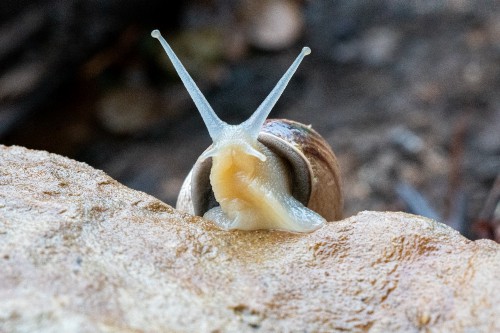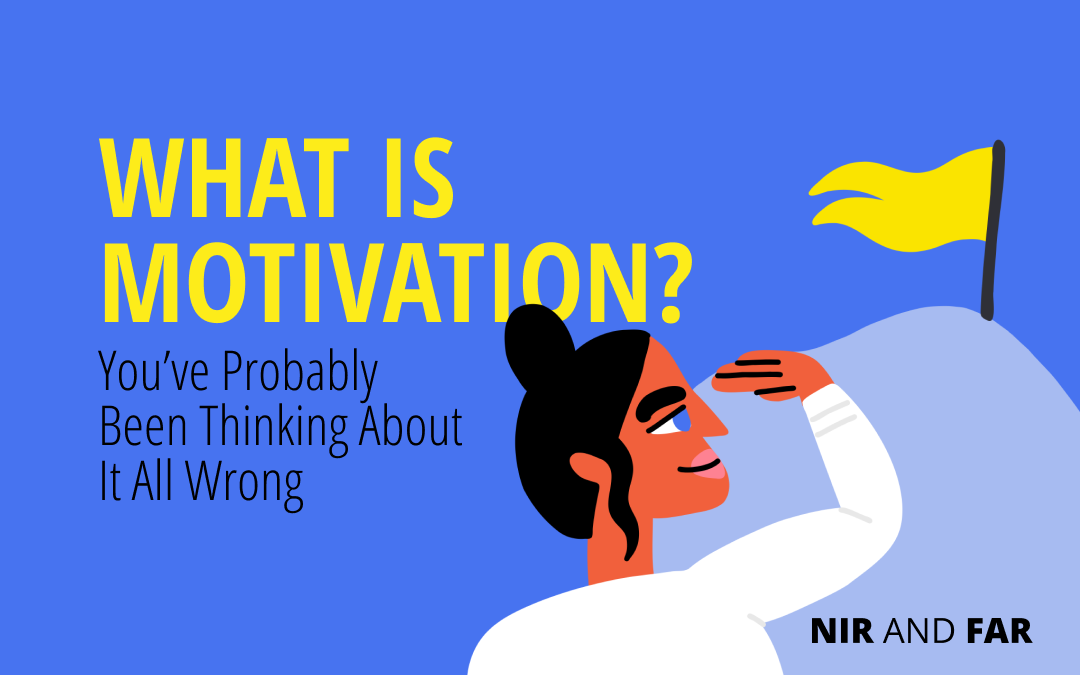It took me five years to write my last book, which was a lot longer than it should have taken. The problem wasn’t that I didn’t know what to do–I did. I just didn’t do it. I wasn’t motivated.
My book, Indistractable, is about how to stop getting distracted. Ironically, the problem was that I kept getting distracted. That is, until I learned the key to finally doing what I set out to do.
When I finally understood the biology behind why we do what we do, I didn’t just write the book; I became more productive at work, started exercising and eating healthier, and spent more time with the people I love, all because I finally realized I’d been thinking about motivation all wrong.
What is the biology of motivation?
Like most people, I only had a vague understanding of what motivation really meant. I thought of it like the wind: it came and went, and,if I were lucky enough to catch it in my sails, I could steer my ship toward my goals.
The problem with this thinking is that if the wind isn’t blowing, you’re dead in the water. If we depend on feeling motivated to do what we don’t feel like doing, we’ll never accomplish hard-to-achieve goals.
To understand what motivation is and how to harness it correctly, we have to understand our brains a bit better, starting with the very basics. Why do we have brains, anyway? Plenty of life forms don’t have brains and get along just fine.
Biologists believe the reason creatures evolved brains was to facilitate motion. It’s no coincidence that the word “motivation” stems from the same root as the word “motion.”

A fascinating study on freshwater snails (I know, stick with me here) found the creatures could make complex decisions with only two brain cells: one for sensing the presence of food and one to tell the snail whether it’s hungry or not. These two neurons determine, for the snail, whether it’s worthwhile to move in the direction of a potential food source. If the hunger pangs are painful enough, the snail moves toward the food (albeit ever so slowly).
More complex brains evolved to help animals escape what psychologists call an “aversive stimulus”–something that feels uncomfortable. Bears and birds leave the cold of winter by respectively hibernating in warm caves or flying south. When our brains register that discomfort, it spurs us to put on a coat. When it’s too hot, discomfort triggers us to take it off again.
This seesaw influencing our behavior is an example of homeostasis. It’s the physiological and psychological process our bodies use to keep us level.
The body’s desire to maintain homeostasis governs all sorts of bodily functions, both conscious and unconscious. But when the body can’t regulate itself, our brain spurs us to action. It makes us do something to fix the problem, just like the snail moving toward food when that one brain cell registers hunger pangs. If our brains determine we’re missing something, whether it’s food to nourish our bodies or friends to nourish our psyche, it creates the feeling of hunger or loneliness to make us feel bad enough to do something to meet that need.
How does this help us answer the question of “What is motivation?”
Motivation is the desire to escape discomfort.
Evolutionarily, our brains are similar to snails’ brains. They’re more complex, sure, but the motivational drive is the same–when we are uncomfortable, we are motivated to restore homeostasis. Even wanting is its own form of discomfort, which means that what looks like a lack of motivation is often simply someone escaping discomfort in an unhealthy or unproductive way.
Let’s take, for example, a teenager who spends all their free time playing video games. Despite what their parents may say, it’s not quite right to say they lack motivation. After all, it takes hours of focus and practice to emerge victorious from an epic battle. Rather, the teenager is motivated to play video games because, in them, they find a way to escape boring schoolwork, social pressure, and nagging parents. It’s a quick, easy relief from dealing with discomfort.
That’s the other important thing to remember–humans, like water, seek the path of least resistance.
Feeling bad isn’t bad.
When we realize that every action we take is about a need for homeostasis, we can change our mindset and design our life accordingly.
So what lessons can we draw to manage our own motivation?
First, we must realize that discomfort isn’t necessarily a bad thing. Thinking that feeling bad is always bad is an unhelpful notion propagated by clueless self-help gurus and modern-day snake oil salesmen. Discomfort doesn’t always need to be relieved. It can be leveraged like rocket fuel to propel us forward.
Instead of looking for the easiest way to rid ourselves of pain, we can look within to understand what’s driving our desire to escape the way we feel. What are we avoiding when we don’t do the things we really want to do?
For me, when I realized I was avoiding the hard work of writing my book, I finally saw that it was nothing more than my feelings standing in my way. I procrastinated instead of writing my book because I didn’t feel like writing. But who said I needed to feel like writing?
My impostor syndrome did. I believed that if I were a “real” writer, writing would be an effortless habit, and I’d always find my work easy and fun. My urge to give in to distraction was my brain’s way of avoiding bad feelings like frustration and self-doubt. Once I realized that, I was able to let go of my ridiculous notions and start working, whether I felt like it or not.
Second, after identifying the uncomfortable emotional states, we can prepare ourselves for what we will do the next time we experience those negative emotions.
As I detail in Indistractable, we can use dozens of well-studied techniques to prepare ourselves for the inevitable urges that can lead to self-defeating behaviors. Practices like the 10-minute rule have been shown to be a highly effective way to master the internal triggers that lead us off track.
And finally, we can rely less on our feelings and more on our routines. By deciding in advance how we want to spend our time, according to our values and our schedule, we pave a clear path for our future actions. Instead of depending on motivation, we can do what we said we would by glancing at our calendar.
Work on my book shifted into high gear when I finally learned about setting what psychologists call an “implementation intention,” the practice of planning out what you’re going to do and when you’re going to do it. A distractible person waits for motivation, then doesn’t understand why they fail to accomplish their goals day after day after day. An indistractable person knows why they got distracted and takes steps today to avoid getting distracted by the same thing tomorrow.
By finally understanding what motivation really is, and what it is not, we can harness it when we have it and use other methods when it runs dry.
Related Articles
- Schedule Maker: a Google Sheet to Plan Your Week
- Habit Tracker Template in Google Sheets
- The Ultimate Core Values List: Your Guide to Personal Growth
- Timeboxing: Why It Works and How to Get Started in 2024
- An Illustrated Guide to the 4 Types of Liars
- Hyperbolic Discounting: Why You Make Terrible Life Choices
- Happiness Hack: This One Ritual Made Me Much Happier

